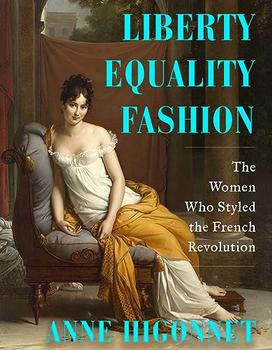Summary | Excerpt | Reviews | Beyond the book | Read-Alikes | Genres & Themes | Author Bio

The American Revolution Through Painters' Eyes
by Paul StaitiIn the late eighteenth-century, the United States of America was still an emerging country, established by the high ideals of republicanism and liberty for all, making the people as a whole sovereign over their land and their home. Artists were a vital part of this burgeoning philosophy. They were the means to record a revolution, to present victories as stunning examples of the young country's growing greatness and to illustrate its commanding identity as a power to be reckoned with.
Paul Staiti has written about, discussed, and co-curated exhibits devoted to the topic of American artists. In Of Arms and Artists, he presents a compelling look at the lives and work of five gifted artists of the American Revolution: Charles Willson Peale, John Singleton Copley, Benjamin West, John Trumbull and Gilbert Stuart. Staiti pays particular attention to these subjects because their work was more than just a recording of key battles of the revolution. The portraits they painted were classic tools of propaganda, with subtle keys and images hidden in various parts of the painting.
The title, Of Arms and Artists, suggests and implicates the equivalent power of both weapons and works of art. It is often said that the pen is mightier than the sword. This can also be true for the artist's paint brush or the sculptor's chisel. By the mere size of the work, or the inclusion of classical elements like statuary and classic texts, the artist defines his work as important, something the viewer should take seriously, and read intuitively.
Throughout the centuries, the visual arts in particular were a tool to describe historic events of national importance, and to illustrate wars and battles of significance. In essence, art can be used as a political tool—instructing people on how to perceive a specific event or person, thus manipulating the general population to accept or reject certain ideals. Peale's portrait of John Beale Bordley, for example, depicts a standing image of the man, leaning on an open book on a pedestal. The words "Nolumus Leges Angliae mutari" ("We are unwilling that the laws of England be changed") are clear and a statue in the background is dressed in classical robes and standing on a pedestal which bears the words, "Lex Angli" (English Justice). As Staiti points out, the artist's intent was to make "a provocative statement of American rights in the face of British tyranny."
Revolutionary artists were encouraged to step away from the British style and develop their own. They looked further back in history and adopted many of the artistic and political ideals of the ancient Roman Empire. The Romans used art and architecture to promote the ideal of power and self-confidence. The poses of Caesar, standing boldly looking off into the distance at all that he controlled, was the Classicism that American Revolutionary artists recognized as a style they wanted to emulate. Thus, they posed their subjects in such a way as to have them look like the great Roman rulers of the distant past. For the five artists featured in this book, the positioning — the pose of the individual (or individuals) being painted were statements of the bold confidence that would (and did) lead to the country's success in gaining its independence.
Perhaps the most defining chapter is the one that discusses the Founding Fathers' recognition of the power behind this art and how they could use it to their benefit. In particular, Staiti focusses on John Adams, one of the Founding Fathers. Adams saw the danger in art, but he also recognized its "unmatched power to persuade – and thus dupe – citizens into thinking that a tyrant is beneficent, that monarchy is natural, and that an oppressed life is God's will." Adams's beliefs led to his involvement in establishing the American Academy of Arts and Sciences (see 'Beyond the Book'). As Staiti indicates, "art should be, in Adams's view, classical, disciplined, idealistic, historical, accurate, ethical, didactic, inspirations, and devoted to timeless truths. In short, Adams wanted his puritan ethic made into a national aesthetic."
Of Arms and Artists: The American Revolution Through Painters' Eyes presents another view of history. Art as history and propaganda, this is a vibrant presentation of the lives of artists, during and immediately after the American Revolution. Peale, Copley, West, Trumbull and Stuart, whose lives were also transformed and manipulated through war and peace, are discussed by Staiti in a manner that will enlighten us all on another view of the art that defined a new nation. Through pictures and words, Staiti paints a portrait of these men who were, in their own right, founders of the new nation and the art that would define it.
A fascinating dissertation that will delight American history enthusiasts, academic historians and art historians, as well as general-interest readers.
![]() This review was originally published in The BookBrowse Review in October 2016, and has been updated for the
September 2017 edition.
Click here to go to this issue.
This review was originally published in The BookBrowse Review in October 2016, and has been updated for the
September 2017 edition.
Click here to go to this issue.

If you liked Of Arms and Artists, try these:

by Anne Higonnet
Published 2024
Three women led a fashion revolution and turned themselves into international style celebrities.

by Laura Cumming
Published 2016
From one of the world's most expert art critics, the incredible true story - part art history and part mystery - of a Velázquez portrait that went missing and the obsessed nineteenth-century bookseller determined to prove he had found it.
Your guide toexceptional books
BookBrowse seeks out and recommends the best in contemporary fiction and nonfiction—books that not only engage and entertain but also deepen our understanding of ourselves and the world around us.